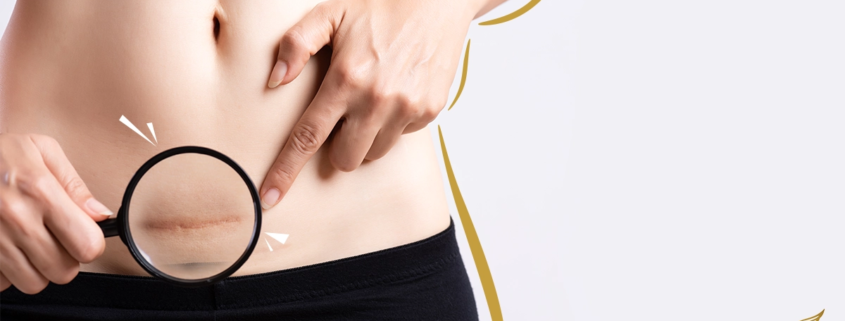Dos and Don’ts for Scar Prevention
Some people think of their scars as battle wounds — and they are nothing to be ashamed of, but caring for fresh wounds can help prevent them from leaving scars.
Follow these tips from to do just that.
Keep the Wound Clean
Broken skin from a wound increases the risk of infection from germs. It will heal in stages, and dermatologists recommend keeping the wound clean throughout the entire process.
Immediately after a wound occurs, it should be kept clean. Your first instinct may be to grab a bottle of hydrogen peroxide or other antiseptic, but this could actually make scarring worse.
Antiseptics like rubbing alcohol and hydrogen peroxide can kill skin tissue and shouldn’t be used to clean wounds. Soap and water are the way to go, adding that you should wash and dry your hands first.
Don’t Wait Too Long to Get Stitches
Medical intervention isn’t always necessary for wounds to heal, but depending on the severity of your wound, you might benefit from getting stitches. Scars form after the wound is healed, and getting stitches can help close and heal the wound quicker. They may also help minimize the appearance of scarring.
Keep the Wound Moist
After cleaning the wound, keep it moist to prevent scars.
Keeping wounds moist results in reduced scar formation, compared with treatment in dry environments. Plenty of research has been done on wet, moist, and dry healing for scar formation, and wet or moist healing has been shown to achieve the fastest healing and least amount of scarring.
Don’t Pick at the Wound
In general, dermatologists recommend against picking at your skin under any circumstances. Whether it’s an active breakout or fresh wound, picking at it seems to make matters worse. It can worsen acne and scarring.
In addition to picking, refrain from scratching or manipulating wounds or newly formed scabs. Picking at wounds during the healing process leads to increased inflammation and scarring. It can also increase the risk of infection from bacteria on your hands.
So, let your skin recover naturally. You should only touch wounds with clean hands and only when you need to clean and moisturize them or change their dressings.
Use a Wound Dressing
A wound dressing comes into direct contact with the wound. It helps protect the wound, keep it moist, and prevent it from exposure to the surrounding environment. Dressings like bandages and gauze help keep the wound clean and should be changed often. Some dressings remove wound drainage and dead tissue when changed.
Don’t Skip Sun Protection
Ideally, everyone should wear sunscreen on a daily basis. It protects against skin cancer and sun damage. If you’re dealing with a recent wound and want to reduce the potential scarring, dermatologists say to take sun protection even more seriously.
Essentially, shielding your scar from the sun can help it fade faster. If you’ve ever gotten a tan, you’re familiar with the process of sunlight making skin appear darker, and scars are no exception to this phenomenon.
Don’t Overexert the Area
If you have a new scar, try not to move the area too much. When a scar moves, it alters its formation and turns it into a thicker or wider scar. Do your best to allow the wound to heal by not overexerting the area.
Getting Treatment for Scars
Preventing wounds is the best way to prevent scarring, but caring for active wounds is the next best thing. Keep your wound clean and moist by washing it with warm, soapy water and using wound dressings like gauze. Once the broken skin has healed, swap out dressings for silicone gel scar sheets, which are the gold standard for minimizing fresh scars. With consistent use, you can expect to see improvements within a couple of months.
With time, scars naturally fade on their own. Yet keloid scars don’t go away. Depending on the type of scar, treatments at a dermatologist’s office may help.
Here are some treatments for scars:
- Lasers
- Dermabrasion
- Chemical peels
- Collagen or steroid injections
- Surgical revision
- Cryosurgery
- Skin grafts
Talk to our dermatologist to determine the right scar treatment for you.
Call our Patient Care Lines: (+632) 7-368 5238 l (+63) 917 862 7454 l (+63) 921 217 0517 for inquiries, questions, and appointments or talk to our consultants via LiveChat at https://shinagawa.ph so we can address and answer them for you.





Leave a Reply
Want to join the discussion?Feel free to contribute!